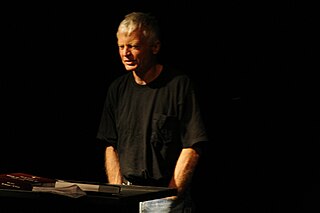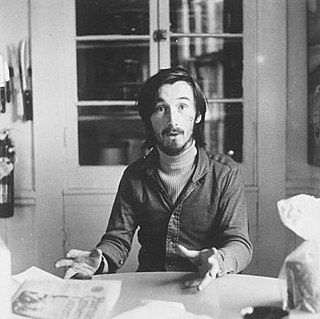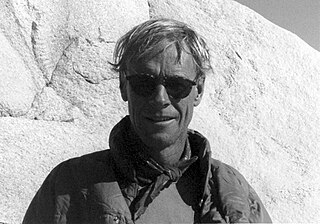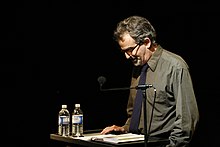
Lewis Barrett Welch Jr. was an American poet associated with the Beat generation literary movement.

Joanne Kyger was an American poet. The author of over 30 books of poetry and prose, Kyger was associated with the poets of the San Francisco Renaissance, the Beat Generation, Black Mountain, and the New York School.

Muriel Rukeyser was an American poet, essayist, biographer, and political activist. She wrote poems about equality, feminism, social justice, and Judaism. Kenneth Rexroth said that she was the greatest poet of her "exact generation".

Bernadette Mayer was an American poet, writer, and visual artist associated with both the Language poets and the New York School.
Clayton Eshleman was an American poet, translator, and editor, noted in particular for his translations of César Vallejo and his studies of cave painting and the Paleolithic imagination. Eshleman's work has been awarded with the National Book Award for Translation, the Landon Translation prize from the Academy of American Poets (twice), a Guggenheim Fellowship in Poetry, two grants from the National Endowment for the Arts, and a Rockefeller Study Center residency in Bellagio, Italy, among other awards and honors.

Ron Padgett is an American poet, essayist, fiction writer, translator, and a member of the New York School. Great Balls of Fire, Padgett's first full-length collection of poems, was published in 1969. He won a 2009 Shelley Memorial Award. In 2018, he won the Frost Medal from the Poetry Society of America.
Michael Davidson is an American poet.
Clark Coolidge is an American poet.

Robert Grenier is a contemporary American poet associated with the Language School. He was founding co-editor of the influential magazine This (1971–1974). This was a watershed moment in the history of recent American poetry, providing one of the first gatherings in print of various writers, artists, and poets now identified as the Language poets.

Victor Bockris is an English-born, U.S.-based author, primarily of biographies of artists, writers, and musicians.

Kenward Gray Elmslie was an American author, performer, editor and publisher associated with the New York School of poetry.
Nationality words link to articles with information on the nation's poetry or literature.
Nationality words link to articles with information on the nation's poetry or literature.

David Meltzer was an American poet and musician of the Beat Generation and San Francisco Renaissance. Lawrence Ferlinghetti described him as "one of the greats of post-World-War-Two San Francisco poets and musicians". Meltzer came to prominence with inclusion of his work in the anthology, The New American Poetry 1945–1960.

William Joseph Scherle was an American politician who served as a U.S. Representative from Southwestern Iowa from 1967 to 1975. He was a member of the Republican Party.
Lewis Warsh was an American poet, visual artist, professor, prose writer, editor, and publisher. He was a principal member of the second generation of the New York School poets,; however, he has said that “no two people write alike, even if they’re associated with a so-called ‘school’ .” Professor of English at Long Island University and founding director (2007–2013) of their MFA program in creative writing, Warsh lived in Manhattan with his wife, playwright-teacher Katt Lissard, whom he married in 2001.
Edwin Honig was an American poet, playwright, and translator.

Rochelle Bass Owens is an American poet and playwright.
Michael Lally is an American-born poet and the author of more than 30 books of poetry. He is considered part of the New York School of poetry, which began in the early 1950s and is acknowledged as one of the most influential movements of American poetry. He counts among his major influences the poets Frank O'Hara and William Carlos Williams, as well as writer William Saroyan.

Stephen Ratcliffe is a contemporary U.S. poet and critic who has published a number of books of poetry and three books of criticism. He lives in Bolinas, CA and is the publisher of Avenue B Press. He was the director of the Creative Writing program at Mills College in Oakland, CA where he has been an instructor for more than 25 years, and continues to teach Creative Writing (poetry) and Literature courses there.












